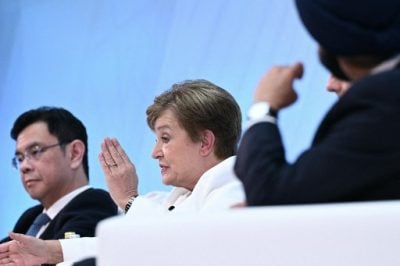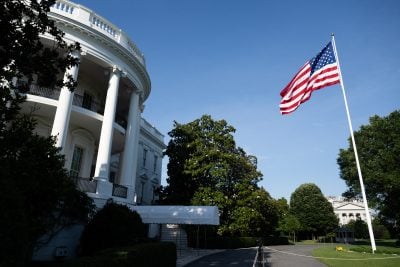The second US-Africa Leaders Summit takes place in Washington, DC, from from December 13 to 15 2022, and the pressure is on.
Close to a decade after the first summit, hosted by President Barack Obama in 2014, President Joe Biden aims to redefine the US-Africa relationship during this summit. We believe participants can learn four lessons from other processes – particularly from China’s engagement with Africa.
The first US-Africa summit gathered leaders from 50 African countries. This year’s second edition has been positioned as a “broadly inclusive summit”. Even Zimbabwe, which has suffered almost two decades of sanctions from the US, has been invited as a symbol of “inclusiveness”.
Does this summit signify a change in US Africa strategy?
In August 2022 the Biden administration launched its US Strategy toward Sub-Saharan Africa, which was billed as signalling its ambition to foster closer US-Africa relations, building on the first summit and lessons learned since then.
US-Africa relations have changed. For instance, by the end of 2021 US exports to Africa barely reached $26.7bn – 30% less than in 2014, when the first summit was held. In 2014, annual US foreign direct investment (FDI) to Africa also peaked at almost $70bn, but dropped and has only recovered to $45bn in 2021.
The UK and France remain Africa’s largest investors, although the US is the largest investor worldwide. Similarly, US imports from Africa peaked at almost $120bn in 2008, but declined thereafter until rising again after 2015, but not to that level.
These figures mask other challenges. US investment into and imports from African countries tend to be focused on oil and other extractives, meaning that 33 African countries had trade deficits with the US in 2019 – that is, they imported more from the US than they exported. Imports from Africa have hovered at under 2% of total US imports.
Four lessons to learn from Africa’s engagement with China
So, looking back at the first summit, how and why did it seem like a mere photo-op, and what can be learned to avoid this happening the second time around?
Today there is a growing series of “Africa-plus-one” summits – such as the Africa-France Summit, the Tokyo International Conference on African Development (TICAD), the Forum on China-Africa Cooperation (FOCAC) and the Turkey-Africa Partnership Summit. Each has its own merits and challenges.
It is FOCAC, a 22-year-old summit mechanism, that deserves most attention. Its impacts on the Africa relationship have been almost opposite to those of the 2014 US-Africa summit.
We see four particular lessons from Africa’s engagement with China that those engaged at the US-Africa Leaders Summit can learn.
1 African priorities first
First, African priorities must be the main focus of summits and of strategy. Certainly, the US has tried to connect its Africa strategy to the UN Sustainable Development Goals (SDGs).
It has launched the Power Africa energy initiative and health initiatives. It seeks to use its influence on the Bretton Woods institutions – the World Bank and the International Monetary Fund. USAID has set out its own broad development strategies such as “self-reliance” and localisation.
African economies, however, have their own development plans, in the shape of the African Union’s Agenda 2063, its six frameworks and 15 flagship projects. Many of these have received attention in FOCAC documents over the years – but most did not feature in the statement from the 2014 US-Africa summit.
Agenda 2063 and the African Continental Free Trade Area (AfCFTA) are mentioned just once and twice respectively in the 12-page US-Africa strategy document released by the Biden administration in August 2022.
As Hannah Ryder, CEO of Development Reimagined, pointed out in asking what the UK could learn from China about running an Africa summit in 2020, development partners must first ask “What can we do for you?” instead of telling African countries what to do.
2 Coordination and consultation
Second, coordination matters. For example, regular consultation meetings bring together Chinese stakeholders and African ambassadors to China to prepare for FOCAC debates, discuss priorities for them, track progress holistically and more widely consider thematic areas.
These build understanding and provide an opportunity for African countries to work collectively, including with and through the African Union. They enable African countries to explain their positions and views to Chinese counterparts – for example on contentious issues such as debt management or climate action.
But there is no such US mechanism. Indeed, it is unclear whether the US expects or encourages African ambassadors to coordinate positions in advance of the summit, a problem that FOCAC was actually designed to address.
3 Clear timelines
Third, regularity, clear timelines and clear deliverables are necessary – specifically for US actors. FOCAC is held every three years and has a high reputation based on its persistence and practicality. The consistency drives Chinese governmental and non-governmental action, as policy signals are clearer.
This is how various commitments have been ramped up over time under FOCAC, for instance, in trade volume goals, new trade policies, debt relief, exact numbers of “connectivity projects”, vaccine donations, scholarship numbers or Chinese experts.
Even if the goals are initially fairly modest, their precision and the expectation of their review can itself be a driver for progress, through the internal accountability that it creates.
4 The need for numbers
Last, but not least, a summit needs concrete, headline numbers. The US has been in the habit of launching broad schemes that are difficult to implement and track. After the US State Department launched the Blue Dot Network in 2019 to promote infrastructure investment, the Biden administration launched new global infrastructure strategies with its G7 allies, including the Build Back Better World (B3W) Partnership in 2021 and the Partnership for Global Infrastructure (PGII) in 2022.
In contrast, China’s Belt and Road Initiative (BRI) and FOCAC targets are offered more as mechanisms for “partner” countries to engage with and shape. Though they are challenging to track, there is a strong perception that the BRI and FOCAC are delivering, particularly because of their numeric format, their links to visible infrastructure and their impact on sovereign lending.
It is possible that the 2022 US-Africa Leaders Summit will simply provide an opportunity for pomp and pageantry on all sides, with little results to show years later. But Africa’s experience with China suggests that summits can be turned into more sustainable and effective mechanisms that offer continuous and practical results for both sides. We’ll be looking out for such green shoots in Washington.
Jade Scarfe is project manager and Africa-China communication assistant at Development Reimagined.
Chensi Li is a research analyst at Development Reimagined.
Want to continue reading? Subscribe today.
You've read all your free articles for this month! Subscribe now to enjoy full access to our content.
Digital Monthly
£8.00 / month
Receive full unlimited access to our articles, opinions, podcasts and more.
Digital Yearly
£70.00 / year
Our best value offer - save £26 and gain access to all of our digital content for an entire year!
 Sign in with Google
Sign in with Google 



